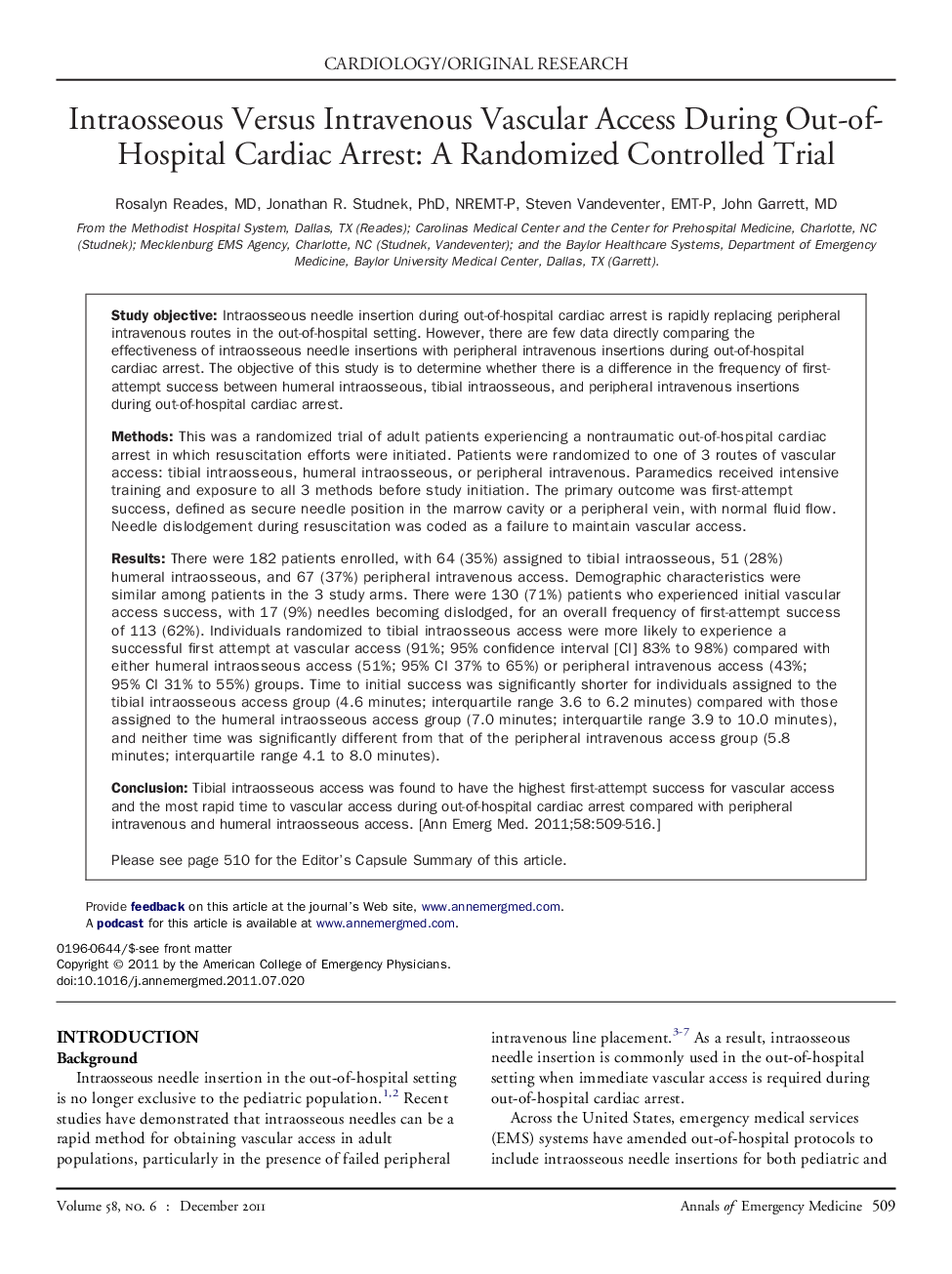| کد مقاله | کد نشریه | سال انتشار | مقاله انگلیسی | نسخه تمام متن |
|---|---|---|---|---|
| 3230502 | 1588564 | 2011 | 8 صفحه PDF | دانلود رایگان |

Study objectiveIntraosseous needle insertion during out-of-hospital cardiac arrest is rapidly replacing peripheral intravenous routes in the out-of-hospital setting. However, there are few data directly comparing the effectiveness of intraosseous needle insertions with peripheral intravenous insertions during out-of-hospital cardiac arrest. The objective of this study is to determine whether there is a difference in the frequency of first-attempt success between humeral intraosseous, tibial intraosseous, and peripheral intravenous insertions during out-of-hospital cardiac arrest.MethodsThis was a randomized trial of adult patients experiencing a nontraumatic out-of-hospital cardiac arrest in which resuscitation efforts were initiated. Patients were randomized to one of 3 routes of vascular access: tibial intraosseous, humeral intraosseous, or peripheral intravenous. Paramedics received intensive training and exposure to all 3 methods before study initiation. The primary outcome was first-attempt success, defined as secure needle position in the marrow cavity or a peripheral vein, with normal fluid flow. Needle dislodgement during resuscitation was coded as a failure to maintain vascular access.ResultsThere were 182 patients enrolled, with 64 (35%) assigned to tibial intraosseous, 51 (28%) humeral intraosseous, and 67 (37%) peripheral intravenous access. Demographic characteristics were similar among patients in the 3 study arms. There were 130 (71%) patients who experienced initial vascular access success, with 17 (9%) needles becoming dislodged, for an overall frequency of first-attempt success of 113 (62%). Individuals randomized to tibial intraosseous access were more likely to experience a successful first attempt at vascular access (91%; 95% confidence interval [CI] 83% to 98%) compared with either humeral intraosseous access (51%; 95% CI 37% to 65%) or peripheral intravenous access (43%; 95% CI 31% to 55%) groups. Time to initial success was significantly shorter for individuals assigned to the tibial intraosseous access group (4.6 minutes; interquartile range 3.6 to 6.2 minutes) compared with those assigned to the humeral intraosseous access group (7.0 minutes; interquartile range 3.9 to 10.0 minutes), and neither time was significantly different from that of the peripheral intravenous access group (5.8 minutes; interquartile range 4.1 to 8.0 minutes).ConclusionTibial intraosseous access was found to have the highest first-attempt success for vascular access and the most rapid time to vascular access during out-of-hospital cardiac arrest compared with peripheral intravenous and humeral intraosseous access.
Journal: Annals of Emergency Medicine - Volume 58, Issue 6, December 2011, Pages 509–516